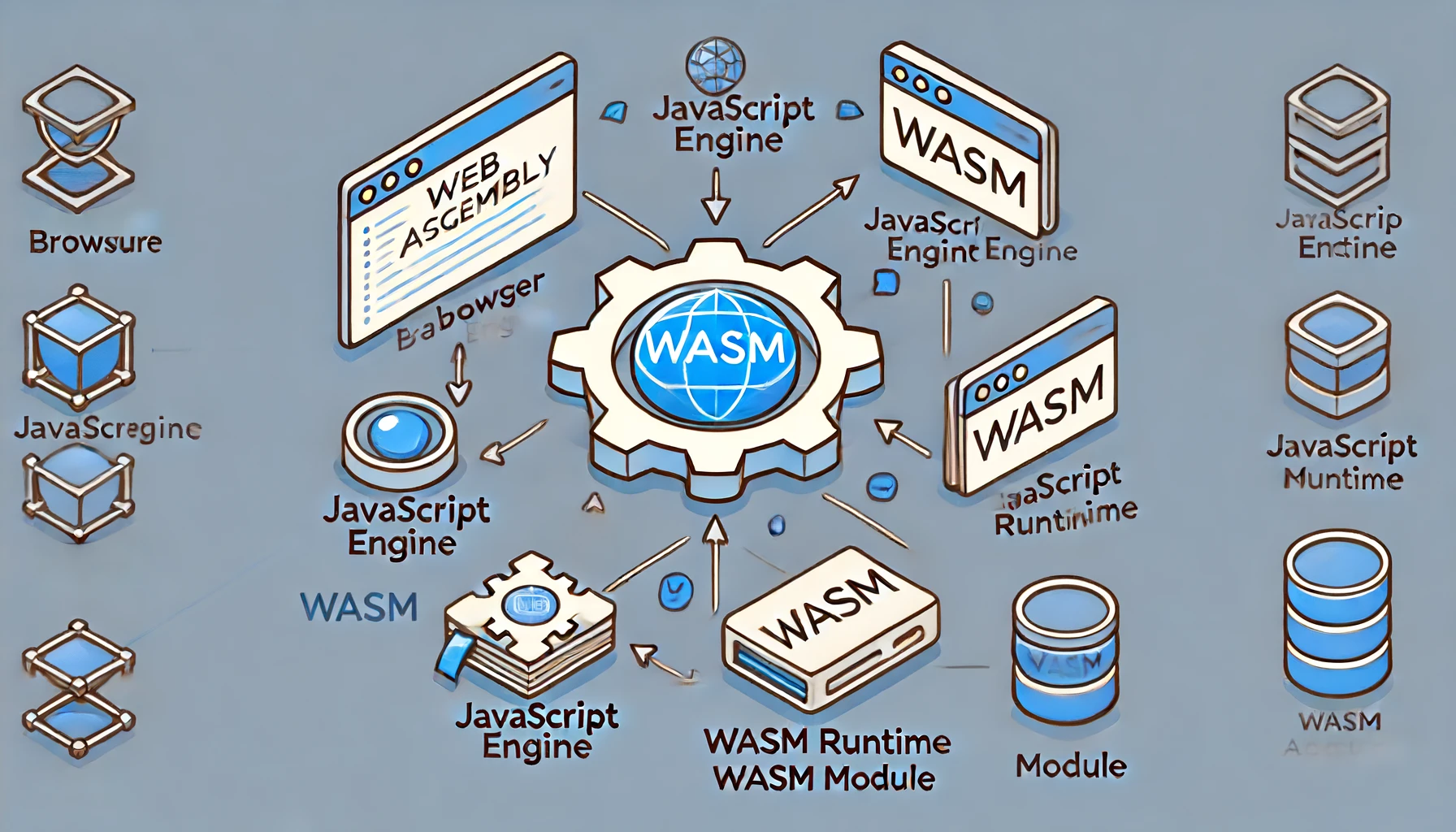How to Implement Web Assembly (WASM) in Kubernetes: A Full Guide
 Blaise Luis
Blaise Luis
Introduction
WebAssembly (WASM) is a binary instruction format for a stack-based virtual machine. Initially designed to improve the performance of web applications, WASM has evolved to become a powerful tool for running code efficiently across various environments, including Kubernetes. This article explores the integration of WebAssembly in Kubernetes, highlighting its benefits, use cases, and implementation strategies.
What is WebAssembly (WASM)?
WebAssembly is a portable, low-level bytecode format that can be executed at near-native speed in a safe, sandboxed environment. It was initially created to enable high-performance applications on web browsers, but its capabilities have expanded to server-side applications and edge computing. Key features of WASM include:
- Performance: Near-native execution speed.
- Portability: Runs consistently across different platforms.
- Security: Operates in a sandboxed execution environment.
- Language Agnostic: Supports multiple programming languages.
Why Use WASM in Kubernetes?
1. Performance and Efficiency
WASM modules are lightweight and can execute code at near-native speeds, making them ideal for performance-critical applications in Kubernetes clusters.
2. Security
WASM provides a secure execution environment, isolating the running code and minimizing the risk of security vulnerabilities, which is crucial for multi-tenant Kubernetes environments.
3. Portability
WASM modules are platform-independent, ensuring consistent behavior across different environments. This portability simplifies deployment and scaling in Kubernetes clusters.
4. Polyglot Applications
With support for various programming languages, WASM allows developers to write Kubernetes applications in their preferred language, compiling them to WASM bytecode for deployment.
Use Cases for WASM in Kubernetes
1. Edge Computing
WASM is well-suited for edge computing scenarios where resources are constrained, and low-latency execution is required. Running WASM modules on edge nodes in a Kubernetes cluster can enhance performance and reduce data transfer latency.
2. Serverless Computing
Kubernetes-based serverless platforms like Knative can leverage WASM for executing lightweight, fast, and isolated functions. WASM modules can be scaled efficiently in response to demand.
3. Microservices
WASM can be used to build microservices that are secure, fast, and portable. These microservices can be deployed across different Kubernetes clusters, ensuring consistent performance and behavior.
4. Secure Multi-Tenancy
In multi-tenant Kubernetes environments, WASM's sandboxed execution environment provides an additional layer of security, isolating tenant workloads and preventing malicious code execution.
Implementing WASM in Kubernetes
1. Setting Up the Environment
To start using WASM in Kubernetes, you need to set up your environment with the necessary tools:
- Kubernetes Cluster: Ensure you have a running Kubernetes cluster. You can use Minikube for local development or a managed Kubernetes service for production.
- WASM Runtime: Install a WASM runtime that supports Kubernetes, such as WasmEdge or Wasmtime.
2. Deploying WASM Modules
Deploying WASM modules in Kubernetes involves the following steps:
- Build the WASM Module: Write your application in a supported language and compile it to WebAssembly bytecode.
- Create a Kubernetes Deployment: Define a Kubernetes deployment that uses a WASM runtime to execute the module.
- Expose the Service: Create a service to expose your WASM application.
3. Monitoring and Scaling
Monitor the performance of your WASM modules using Kubernetes-native tools like Prometheus and Grafana. Utilize Kubernetes' scaling features to adjust the number of replicas based on demand.
Conclusion
WebAssembly brings significant advantages to Kubernetes environments, including performance, security, and portability. By integrating WASM with Kubernetes, organizations can build scalable, secure, and efficient applications that run consistently across different platforms. Whether for edge computing, serverless functions, or microservices, WASM in Kubernetes is a powerful combination that addresses many modern computing challenges.
Implementing WASM in Kubernetes requires understanding both technologies' basics and how they complement each other. With the right setup and deployment strategies, developers can leverage the full potential of WASM in Kubernetes to build next-generation applications.
This article provides a comprehensive overview of integrating WebAssembly with Kubernetes, highlighting its benefits, use cases, and implementation strategies. By following these guidelines, you can effectively harness the power of WASM in your Kubernetes deployments.
Subscribe to my newsletter
Read articles from Blaise Luis directly inside your inbox. Subscribe to the newsletter, and don't miss out.
Written by
